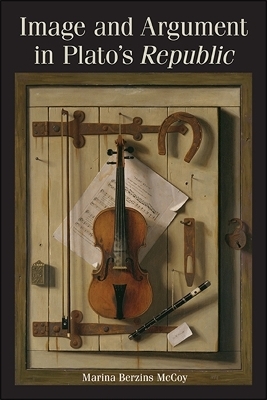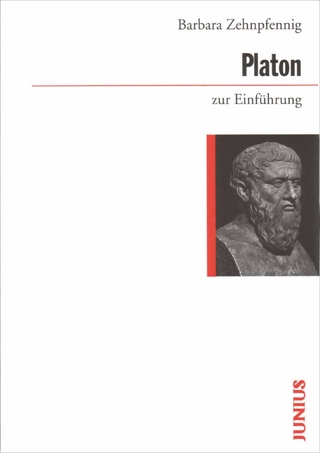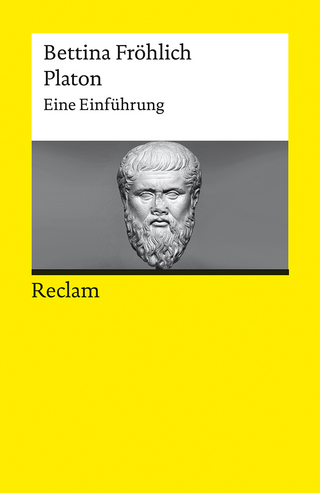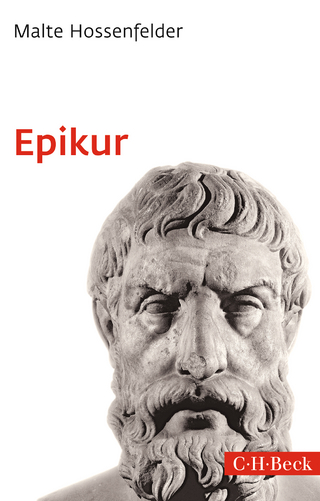
Image and Argument in Plato's Republic
Seiten
2021
State University of New York Press (Verlag)
978-1-4384-7912-5 (ISBN)
State University of New York Press (Verlag)
978-1-4384-7912-5 (ISBN)
Argues that images are at the heart of the dialogue’s philosophical argumentation.
Although Plato has long been known as a critic of imagination and its limits, Marina Berzins McCoy explores the extent to which images also play an important, positive role in Plato's philosophical argumentation. She begins by examining the poetic educational context in which Plato is writing and then moves on to the main lines of argument and how they depend upon a variety of uses of the imagination, including paradigms, analogies, models, and myths. McCoy takes up the paradoxical nature of such key metaphysical images as the divided line and cave: on the one hand, the cave and divided line explicitly state problems with images and the visible realm. On the other hand, they are themselves images designed to draw the reader to greater intellectual understanding. The author gives a perspectival reading, arguing that the human being is always situated in between the transcendence of being and the limits of human perspective. Images can enhance our capacity to see intellectually as well as to reimagine ourselves vis-à-vis the timeless and eternal. Engaging with a wide range of continental, dramatic, and Anglo-American scholarship on images in Plato, McCoy examines the treatment of comedy, degenerate regimes, the nature of mimesis, the myth of Er, and the nature of Platonic dialogue itself.
Although Plato has long been known as a critic of imagination and its limits, Marina Berzins McCoy explores the extent to which images also play an important, positive role in Plato's philosophical argumentation. She begins by examining the poetic educational context in which Plato is writing and then moves on to the main lines of argument and how they depend upon a variety of uses of the imagination, including paradigms, analogies, models, and myths. McCoy takes up the paradoxical nature of such key metaphysical images as the divided line and cave: on the one hand, the cave and divided line explicitly state problems with images and the visible realm. On the other hand, they are themselves images designed to draw the reader to greater intellectual understanding. The author gives a perspectival reading, arguing that the human being is always situated in between the transcendence of being and the limits of human perspective. Images can enhance our capacity to see intellectually as well as to reimagine ourselves vis-à-vis the timeless and eternal. Engaging with a wide range of continental, dramatic, and Anglo-American scholarship on images in Plato, McCoy examines the treatment of comedy, degenerate regimes, the nature of mimesis, the myth of Er, and the nature of Platonic dialogue itself.
Marina Berzins McCoy is Professor of Philosophy at Boston College. She is the author of Wounded Heroes: Vulnerability as a Virtue in Ancient Greek Literature and Philosophy and Plato on the Rhetoric of Philosophers and Sophists.
Acknowledgments
Introduction
1. Poetry and the Republic
2. Visioning and Reenvisioning Justice
3. Paradigmatic Argument and Its Limits
4. Narrative, Poetry, and Analogical Strategies of Argument
5. Images of Justice
6. Image, Argument, and Comedy in the Ideal City
7. The Image of the Sun
8. The Divided Line and the Cave
9. Images of Imperfection
Notes
Bibliography
Index
| Erscheinungsdatum | 02.08.2021 |
|---|---|
| Reihe/Serie | SUNY series in Ancient Greek Philosophy |
| Zusatzinfo | Total Illustrations: 0 |
| Verlagsort | Albany, NY |
| Sprache | englisch |
| Maße | 152 x 229 mm |
| Gewicht | 227 g |
| Themenwelt | Geisteswissenschaften ► Philosophie ► Philosophie Altertum / Antike |
| ISBN-10 | 1-4384-7912-3 / 1438479123 |
| ISBN-13 | 978-1-4384-7912-5 / 9781438479125 |
| Zustand | Neuware |
| Haben Sie eine Frage zum Produkt? |


